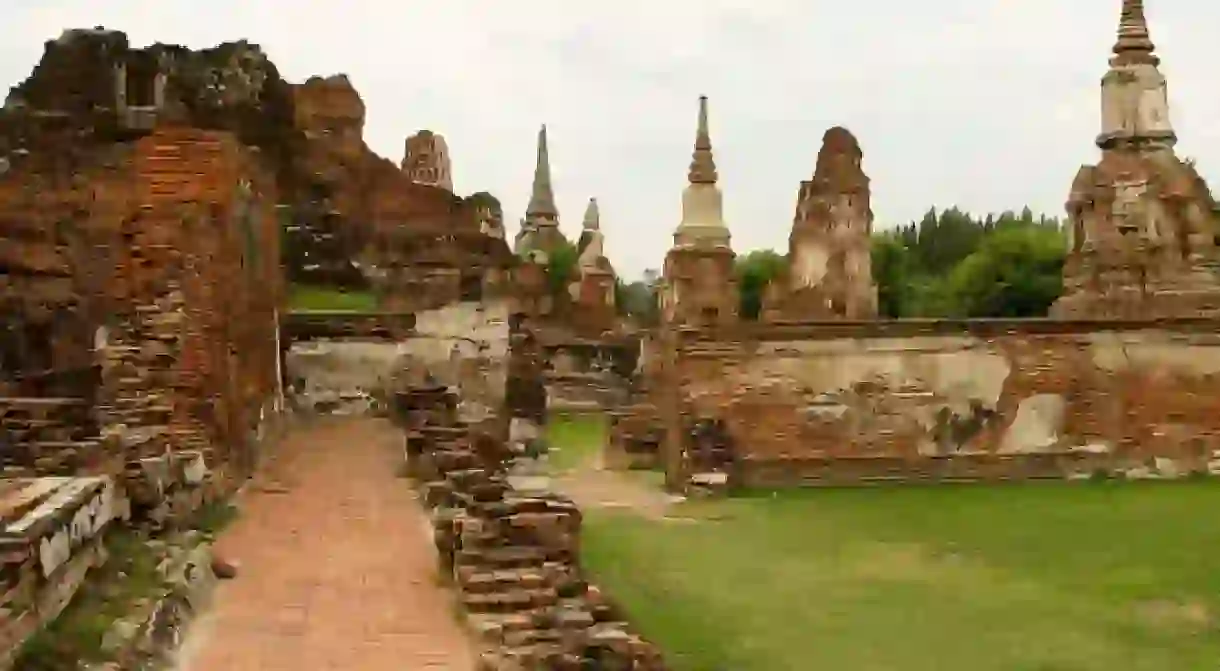When History Met Spirtuality: Thailand World Heritage Sites

The Culture Trip journeys to the UNESCO World Heritage Sites that turn Thailand into a must-see destination for nature, culture and history lovers. From Ban Chiang’s prehistoric graves to the Thung Yai and Huai Kha Khaeng sanctuaries, we offer a guide to Thailand’s stunning world heritage destinations.

Ban Chiang Archaeological Site
Southeast Asia was considered a region whose culture was heavily influenced — and overshadowed — by China and India. Then, sometime in the 1960s, a Harvard graduate accidentally stumbled over a tree root, which led to a series of ground breaking discoveries. These revealed that, in fact, settlements in Thailand’s Ban Chiang village date as far back as the 4th millennium BC. Dispelling previous beliefs, Ban Chiang was actually a sophisticated cultural, social, agricultural and technological center in its own right, and its influence spread throughout the Indonesian archipelago. Whilst agriculture was at the heart of Ban Chiang’s economy, ceramic pots with burnt ochre swirl designs, metal grave gifts and other artifacts testify to the area’s prolific cultural and artistic activity. An excavated area beneath the modern Ban Chiang village is preserved for public viewing, complementing a comprehensive collection – from gruesome skeletons to colorful glass bead jewelerey — sheltered at Thailand’s National Museum.

Historic City of Ayutthaya
A historical park dotted with awe inspiring prangs (reliquary towers) and immense Buddhist temples in a multitude of architectural styles, these showcase the former Siamese capital’s glorious past. A major economic, commercial and religious center from the 14th to the 18th centuries, cosmopolitan Ayutthaya (c. 1350) now sits in ruins. Built strategically on the Ayutthaya island, the city takes visitors through Ayutthaya’s glorious past, when it exchanged ambassadors with the French Court at Versailles, and the influence of local artists and craftsmen spread far and wide, from the traditions of Sukhothai to 18th century Persia and Japan. From the much-photographed Wat Mahathat temple with its famous Buddha head ‘trapped’ in the roots of a bunyan tree to the elaborate Khmer styling of Wat Chaiwatthanaram and the mural paintings in the crypt of Wat Ratchaburana, the heritage site (est. 1991) and its surrounding area offer kilometers of mythological walks that, ideally, will take you a couple of days to explore.

Historic Town of Sukhothai and Associated Historic Towns
There’s no better spot to enter the Thai architectural time warp than through the historical park of Sukhothai which served as the capital of the first Kingdom of Siam in the 13th-14th centuries. About a dozen kilometers away from the new town, its well preserved fortifications seemingly acting as a barrier to modern civilization, the old town of Sukhothai showcases the famed Sukhothai architectural style. The two other principal towns of the kingdom of Rama are Si Satchanlai and Kampheng Pet; both feature a characteristic range of monasteries, stupas and giant Buddha statues that watch over the surrounding historical parks in reflective wisdom. The distinct Wat Mahathat and Sra Si Wat in Sukhothai, and the ‘temple with seven points’ Chedi Chet Thao in Si Satchanlai are just a few of the dozens of preserved Sukhothai buildings that are a testament to the former magnitude and power of the Siamese Kingdom.

Dong Phayayen – Khao Yai Forest Complex
The Dong Phayayen – Khao Yai Forest Complex with its abundant nature trails will not disappoint wildlife-seekers, bird watchers and eco-tourists. According to UNESCO, more than 800 species of fauna call the Dong Phayayen – Khao Yai Forest Complex home. A 230-kilometer thick tropical paradise is nestled between Ta Phraya National Park on the Cambodian border and Khao Yai National Park in the west; the complex is a key preservation where herds of tigers and elephants, deer, gaurs, bantegs, pileated gibbons, spot-billed pelicans, asiatic black bears and other vulnerable and endangered species coexist. This phenomenal monsoon forest is also a vital source of clean water, and is incomparable in its beauty. Against a dramatic mountainous backdrop, rich in geographical sculptures and quirky rock formations, and scenic waterfalls, the Dong Phayayen – Khao Yai Forest Complex is an unforgettable adventure.

Thung Yai and Huai Kha Khaeng Wildlife Sanctuaries
The Thung Yai and Huai Kha Khaeng Wildlife Sanctuaries are two contiguous and abundant wildlife reserves with five distinct forest types located adjacent to the Myanmar border. Among the stunning backdrop of valleys, breathtaking mountains, limestone caves and exotic flora, nestle colonies of near-extinct wild water buffalo, green peafowl and Asian tapi, along with hornbills, woodpeckers, twin-spotted tree frogs, butterfly lizards and other hard-to-spot species. A vast grassland plain and a surrounding savannah forest of cycads and Phoenix palm, as well as Thailand’s most extensive riparian forests, are a rare quality of Thung Yai (which means ‘big field’), hardly found anywhere else in the world. Whilst Thung Yai has gained publicity for illegal hunting and logging activities, some 3,800 native tribal people also call Thung Yai home and live in harmony with their wild counterparts.













